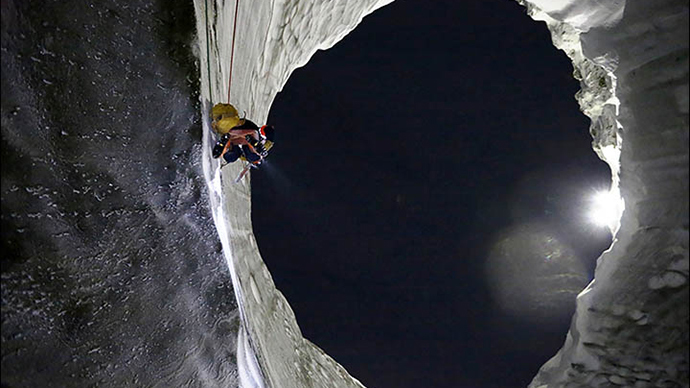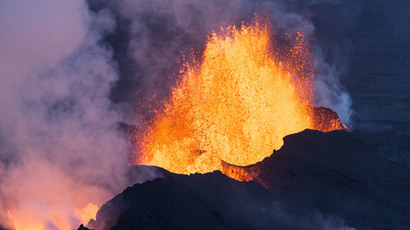Stunning beauty inside mysterious Siberian crater (PHOTOS)

Russian scientists have explored a newly-formed and mysterious crater in Siberia. Theу hope their research will shed light on the origin of the hole in the land that locals call ‘the end of the world.’
The scientists were waiting for winter to freeze the walls of the crater, so that they could climb down 10.5 meters to its base. Director of the Russian Centre of Arctic Exploration and the expedition’s leader, Vladimir Pushkarev, told The Siberian Times, “We managed to go down into the funnel, all was successful. We used climbing equipment, and it is easier to do this in winter than in summer, with the ground now hard.”

“We took all the probes we planned, and made measurements. Now scientists need time to process all the data and only then can they draw conclusions,” he added.

While the next expedition is planned for April 2015, experts believe that in summer such craters could turn into tiny lakes.
The crater visited is the largest of the three known holes in Yamal, which means “The end of the world” in the Nenec language. With a 60-meter diameter, its funnel is about 16.5 meters deep, not including an earthen rampart on the surface, with a base formed by a frozen lake.
“The depth of the mini-lake is about 10.5 meters but it could be deeper. We are waiting for the exact information from readings taken by the scientists,” Pushkarev said.

The journey was organized by the newly formed Russian Centre of Arctic Exploration, and united experts from several research centers. “They did radiolocation tests at a depth of 200 meters, took probes of ice, ground, gases, and air. Now they have all gone back to their institutes and labs and will work on the material. The next stage is processing the gathered information”, the expedition leader said.

“Then we plan to explore the surrounding area, comparing images from space, and even those taken in the 1980s, to understand if there are – or were – some similar objects,” Pushkarev added.

Experts are developing a theory that underground explosions caused by released gas hydrates formed the crater. The scientists will also create a 3D model of the crater, which is at the basin of the Mordy-jacha River. In the future it could help predict the possible emergence of such natural phenomenon.

Pushkarev said: “As of now we don't see anything dangerous in the sudden appearance of such holes, but we've got to study them properly to make absolutely sure we understand the nature of their appearance and don't need to be afraid of them.” He was commenting on a hypothesis that the Russian craters have the same origin as the Bermuda Triangle – an area in the Atlantic Ocean, where ships and aircraft are believed to go missing.














